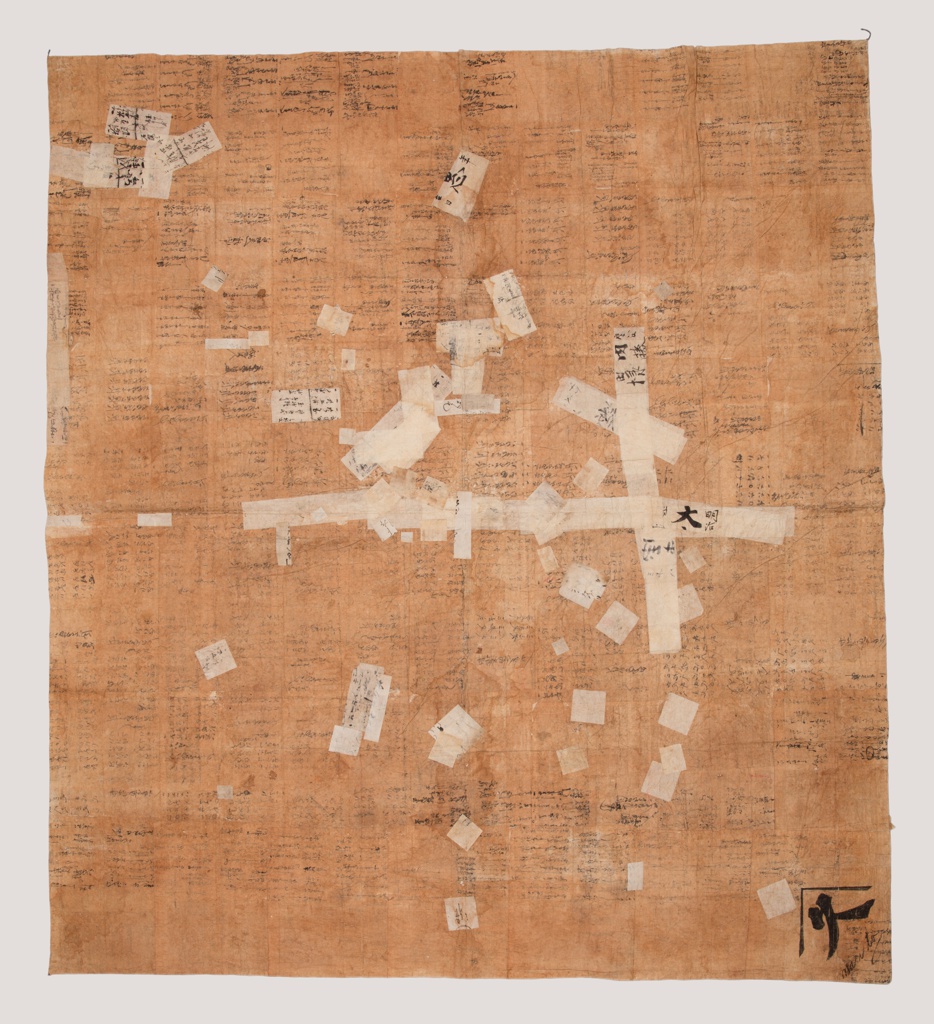There are 7 other images of this object. See our image rights statement.
Object Timeline
|
2017 |
|
|
2020 |
|
|
2025 |
|
Wrapping Cloth (furoshiki)
This is a Wrapping cloth (furoshiki). It is dated late 19th century and we acquired it in 2017. Its medium is mulberry paper (washi) and its technique is pieced and glued, stained with persimmon juice. It is a part of the Textiles department.
This rare furoshiki or wrapping cloth is made entirely of recycled sheets of Japanese washi paper from accounting ledgers. Because washi is made from the long bast fibers of paper mulberry, which is also used for weaving, its properties are more like a non-woven textile more than the modern, cellulose-based paper with which we are familiar. Further, after the paper was pieced and glued together, it was stained with green persimmon juice to increase its suppleness and resiliency – a process adapted from the creation of katagami stencils for resist-dyeing.
Before the development of paper, woven mulberry cloth was frequently used for wrapping cloths. Woven textiles made from twisted paper yarns (shifu) originated in 16th century Japan, developed by the impoverished rural population for lack of other materials. The survival of such a large utilitarian cloth made of intact sheets of washi is rare, but it suggests that in pre-industrial Japan paper must certainly have been used in place of cloth in applications more varied than is known today. The graphic component of the script on the sheets, combined with the heavily patched center area and unusual materials make this an exceptional piece with much to communicate about Japanese resourcefulness and aesthetics.
It is credited Museum purchase from General Acquisitions Endowment Fund.
Its dimensions are
H x W: 167.6 × 149.9 cm (5 ft. 6 in. × 59 in.)
Cite this object as
Wrapping Cloth (furoshiki); mulberry paper (washi); H x W: 167.6 × 149.9 cm (5 ft. 6 in. × 59 in.); Museum purchase from General Acquisitions Endowment Fund; 2017-15-3
